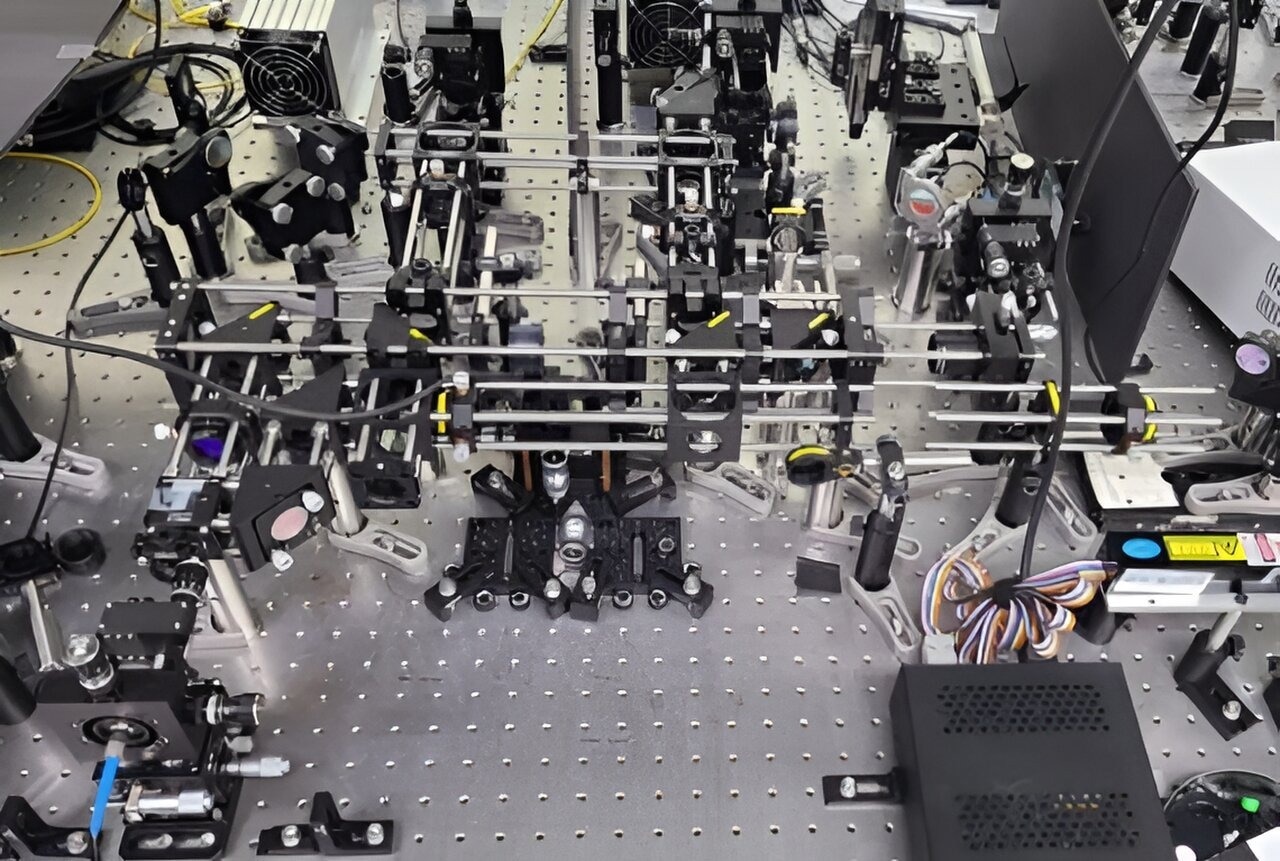Reviewed by Lexie CornerJun 11 2024
Researchers from the Korea Research Institute of Standards and Science (KRISS) have made a significant breakthrough in infrared (IR) measurement technology. The study, published in the journal Quantum Science and Technology, details a novel quantum sensor that utilizes the power of quantum entanglement to overcome limitations in traditional IR measurement methods.
 A composite interferometer experiment device for the undetected photon quantum sensor. Image Credit: Korea Research Institute of Standards and Science
A composite interferometer experiment device for the undetected photon quantum sensor. Image Credit: Korea Research Institute of Standards and Science
The KRISS research team has devised a unique solution—a quantum sensor that leverages quantum entanglement. In this phenomenon, two light particles (photons) become linked, sharing a single quantum state regardless of distance. Recently, a remote sensor that replicates this kind of quantum entanglement using two light sources has been developed: the undetected photon quantum sensor.
A photon that travels to the measurement target and returns is called an undetected photon (idler). To gather information about the target, the unseen photon sensor measures the other photon in the pair that is connected by quantum entanglement rather than this photon directly.
It has only been possible to realize quantum sensing based on undetected photons in the last ten years, making it a relatively new technology. Even though the technology is still in its infancy, the international research community is still actively participating in the race to develop it. KRISS's undetected photon quantum sensor differs from earlier research because it uses a photodetector and interferometer as its primary photometric devices.
A photodetector is a device that transforms light into an electrical signal output. The applications of current high-performance photodetectors were mainly restricted to visible light bandwidths. Although infrared wavelengths are valuable for measurements in a wide range of applications, there were either no detectors available or only detectors with subpar performance.
The most recent KRISS research has made it possible to efficiently measure the light states in the infrared band without the need for expensive and power-hungry equipment by using visible light detectors. This technology can be used for various applications, such as the nondestructive measurement of three-dimensional structures, gas composition analysis, and biometry.
The interferometer, which integrates multiple light rays that travel through distinct paths to obtain signals, is another essential component in precision optical measurement. The number of targets that can be measured is limited by the use of basic Michelson interferometers in conventional undetected photon quantum sensors, which adopt simple light paths.
The KRISS-developed sensor significantly improves scalability by implementing a hybrid interferometer that can flexibly change the light paths depending on the target object. The sensor is adaptable to diverse environmental conditions, as it can be adjusted according to the size or shape of the object being measured.
Using a hybrid interferometer, the Quantum Optics Group at KRISS has empirically demonstrated the effectiveness of the quantum sensors and presented a theoretical analysis of the factors determining the key performance metrics.
To measure a three-dimensional sample, the research team reflected light in the infrared band onto it. Then, they measured the entangled photons in the visible bandwidth to obtain the sample image, which included depth and width. From visible range measurements, the team has successfully recreated a three-dimensional infrared image.
This is a breakthrough example that has overcome the limits of conventional optical sensing by leveraging the principles of quantum optics. He added that KRISS will continue with follow-up research for the practical application of the technology by reducing its measurement time and increasing sensor resolution.
Park Hee Su, Head, Quantum Optics Group, Korea Research Institute of Standards and Science
Journal Reference:
Kim, M. E., et al. (2024) Quantum optical induced-coherence tomography by a hybrid interferometer. Quantum Science and Technology. doi.org/10.1088/2058-9565/ad124d